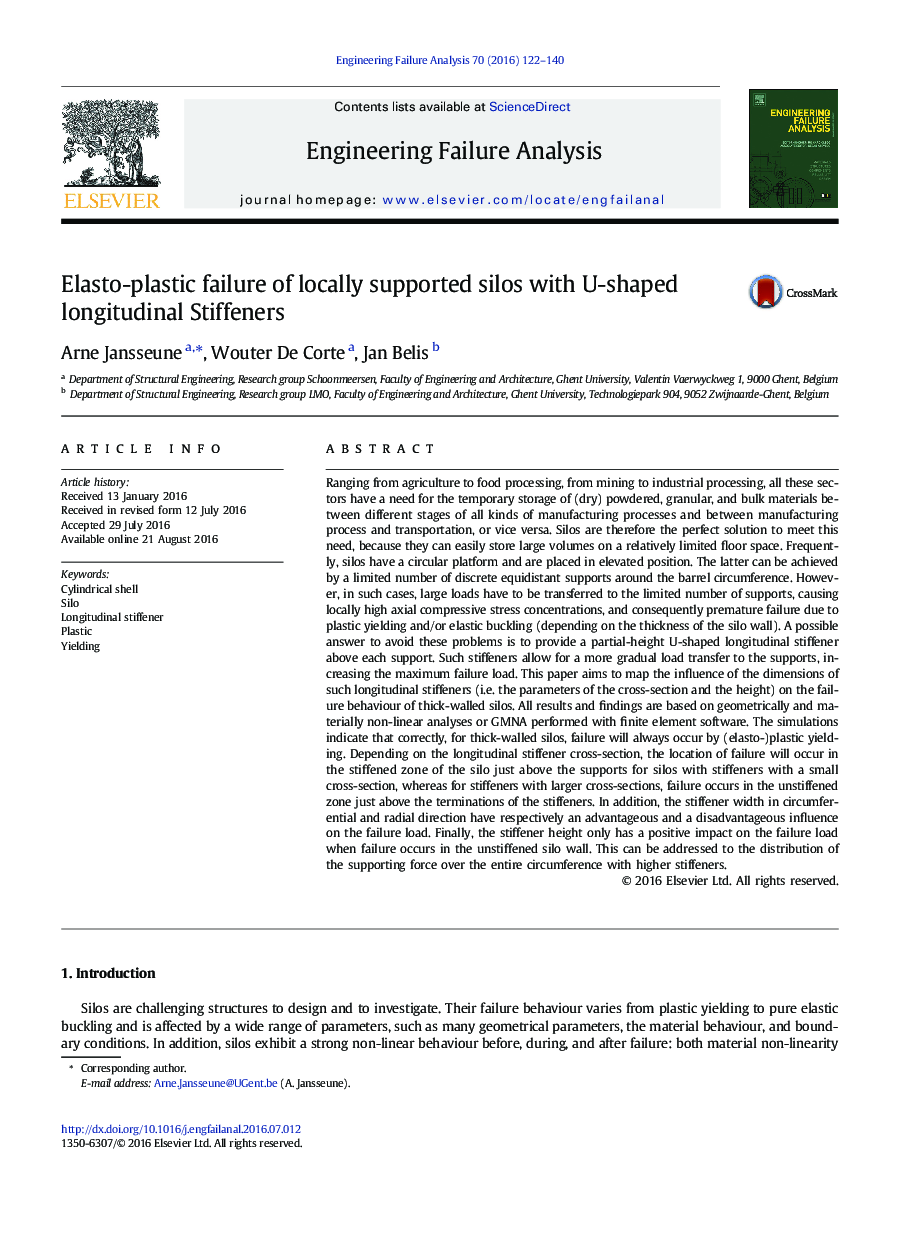| Article ID | Journal | Published Year | Pages | File Type |
|---|---|---|---|---|
| 7168044 | Engineering Failure Analysis | 2016 | 19 Pages |
Abstract
Ranging from agriculture to food processing, from mining to industrial processing, all these sectors have a need for the temporary storage of (dry) powdered, granular, and bulk materials between different stages of all kinds of manufacturing processes and between manufacturing process and transportation, or vice versa. Silos are therefore the perfect solution to meet this need, because they can easily store large volumes on a relatively limited floor space. Frequently, silos have a circular platform and are placed in elevated position. The latter can be achieved by a limited number of discrete equidistant supports around the barrel circumference. However, in such cases, large loads have to be transferred to the limited number of supports, causing locally high axial compressive stress concentrations, and consequently premature failure due to plastic yielding and/or elastic buckling (depending on the thickness of the silo wall). A possible answer to avoid these problems is to provide a partial-height U-shaped longitudinal stiffener above each support. Such stiffeners allow for a more gradual load transfer to the supports, increasing the maximum failure load. This paper aims to map the influence of the dimensions of such longitudinal stiffeners (i.e. the parameters of the cross-section and the height) on the failure behaviour of thick-walled silos. All results and findings are based on geometrically and materially non-linear analyses or GMNA performed with finite element software. The simulations indicate that correctly, for thick-walled silos, failure will always occur by (elasto-)plastic yielding. Depending on the longitudinal stiffener cross-section, the location of failure will occur in the stiffened zone of the silo just above the supports for silos with stiffeners with a small cross-section, whereas for stiffeners with larger cross-sections, failure occurs in the unstiffened zone just above the terminations of the stiffeners. In addition, the stiffener width in circumferential and radial direction have respectively an advantageous and a disadvantageous influence on the failure load. Finally, the stiffener height only has a positive impact on the failure load when failure occurs in the unstiffened silo wall. This can be addressed to the distribution of the supporting force over the entire circumference with higher stiffeners.
Related Topics
Physical Sciences and Engineering
Engineering
Industrial and Manufacturing Engineering
Authors
Arne Jansseune, Wouter De Corte, Jan Belis,
